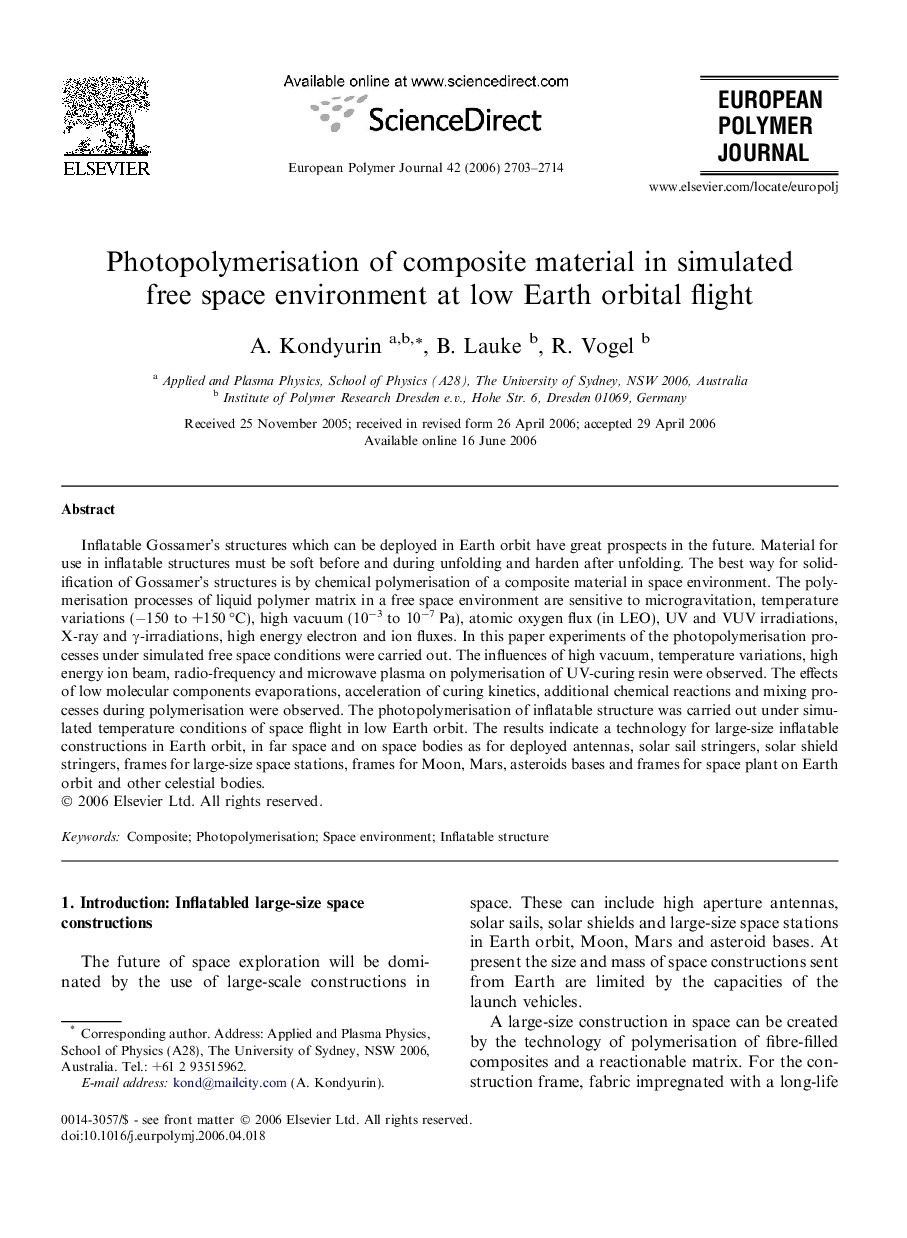| Article ID | Journal | Published Year | Pages | File Type |
|---|---|---|---|---|
| 1400286 | European Polymer Journal | 2006 | 12 Pages |
Abstract
Inflatable Gossamer's structures which can be deployed in Earth orbit have great prospects in the future. Material for use in inflatable structures must be soft before and during unfolding and harden after unfolding. The best way for solidification of Gossamer's structures is by chemical polymerisation of a composite material in space environment. The polymerisation processes of liquid polymer matrix in a free space environment are sensitive to microgravitation, temperature variations (â150 to +150 °C), high vacuum (10â3 to 10â7 Pa), atomic oxygen flux (in LEO), UV and VUV irradiations, X-ray and γ-irradiations, high energy electron and ion fluxes. In this paper experiments of the photopolymerisation processes under simulated free space conditions were carried out. The influences of high vacuum, temperature variations, high energy ion beam, radio-frequency and microwave plasma on polymerisation of UV-curing resin were observed. The effects of low molecular components evaporations, acceleration of curing kinetics, additional chemical reactions and mixing processes during polymerisation were observed. The photopolymerisation of inflatable structure was carried out under simulated temperature conditions of space flight in low Earth orbit. The results indicate a technology for large-size inflatable constructions in Earth orbit, in far space and on space bodies as for deployed antennas, solar sail stringers, solar shield stringers, frames for large-size space stations, frames for Moon, Mars, asteroids bases and frames for space plant on Earth orbit and other celestial bodies.
Related Topics
Physical Sciences and Engineering
Chemistry
Organic Chemistry
Authors
A. Kondyurin, B. Lauke, R. Vogel,
